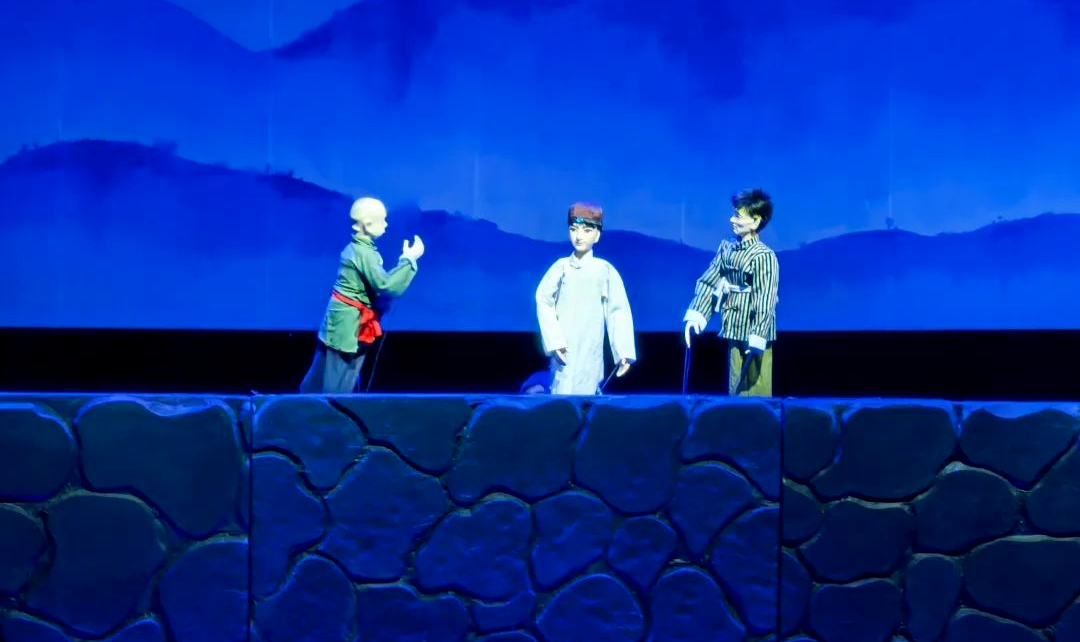The medium-sized cane headed puppet show in Neijiang, a treasure of China's intangible cultural heritage
On the morning of March 22nd, in the Kaku Theater of Beijing China Puppet Art Theatre, the lights gradually went out, and a unique performance kicked off. The medium-sized cane headed puppet show, a national intangible cultural heritage project, has made its debut on this top domestic art stage for the first time. With a brilliant and unparalleled performance, it has brought a unique cultural experience to the audience in the capital and revitalized ancient intangible cultural heritage in modern theaters.

On stage, painted puppets appear in pursuit of light, and the legendary story of young Zhang Daqian slowly unfolds. When "Young Zhang Daqian" was dealing with the bandits, the puppeteer hid behind the scenes, his hands like agile weavers, skillfully pulling the main control line.
The movements of the puppet, such as frowning, rolling sleeves, and sprinting, accurately replicate the unique charm of the rivers and lakes of Sichuan people, and the wooden joints seem to be endowed with fresh vitality. Since the reign of Emperor Guangxu in the Qing Dynasty, the skill of medium-sized cane head puppetry in Zizhong has been passed down from generation to generation. Artists need to simultaneously manipulate the "life pole", "hand pole", and "waist pole", making the skill quite difficult. In 2014, it was included in the expanded list of national intangible cultural heritage representative projects. Today, in the exhibition room of Zizhong County Puppet Troupe, exquisite puppets passed down from the Qing Dynasty are still preserved, witnessing the long history of this art.
After the performance, the on-site audience responded enthusiastically. Wu Ying, a 60 something old audience member from the capital, said with a lingering desire, "This is my first time watching a puppet show, and the performance form of real people interweaving is very innovative." Chen Yingxian, President of the China Center of the UNESCO International Puppet Federation, commented, "The play is full of Sichuan puppetry skills, which are fresh and familiar to the art world in Beijing. I hope to recommend it to participate in the Sino German Puppet Shadow Art Festival and showcase the confidence of Chinese culture to the world." Many people from Neijiang also came to watch, and the local dialect and skills of the puppet show aroused their deep attachment to their hometown. This performance is not only an artistic feast, but also a journey of breaking through the boundaries of Zizhong culture.

The Zizhong County Puppet Troupe aims to gain wider recognition for its puppetry skills and promote the "living inheritance" of intangible cultural heritage. The troupe leader Hu Hai stated that in the future, he will continue to uphold integrity and innovate, creating more excellent plays centered on the people. The performance has also become a window for promoting the image of Zizhong City. The on-site display area for agricultural specialty products such as Zizhong Blood Oranges and Peanut Crisps combines cultural experiences with consumption scenes, forming a cultural and tourism chain of "watching puppets and tasting Zizhong", attracting the attention of investment promotion agencies and enterprises. Zizhong also takes this opportunity to promote its cultural heritage, local customs, and investment promotion policies to the outside world, hoping to use "puppets" as a medium to attract investment and development from all parties, and let Zizhong, this cultural pearl, shine brighter in the new era. (Xiao Zhengjun)
翻译:宋诗苑 审核:文杰







